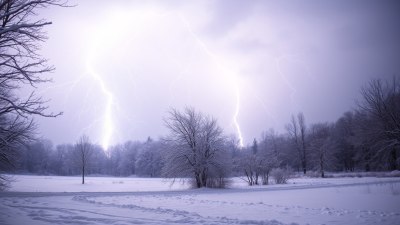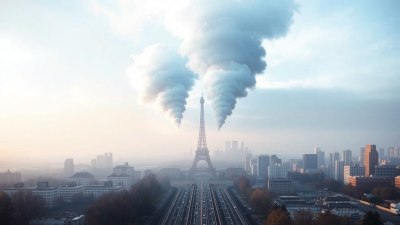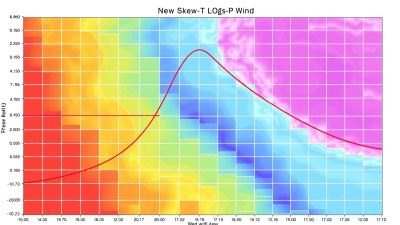How Water and Land Heat at Different Speeds and Why It Matters
Explore the differences in heating speeds between water and land, and understand their environmental impacts.

Image by cookie-studio on Freepik
Understanding how water and land heat at different rates is crucial for comprehending numerous ecological, meteorological, and environmental phenomena. This difference in heat absorption is not just an intriguing scientific fact; it has profound implications for our daily lives, climate patterns, and even ecosystem functions. In this article, we will delve into the fundamental reasons behind the different heating rates of water and land, examine their effects on weather and climate, and discuss why these differences matter in a rapidly changing world.
The Basics of Thermal Dynamics
At its core, thermal dynamics refers to how materials absorb, retain, and release heat. Water and land have distinct properties that influence their thermal dynamics significantly. Water has a high specific heat capacity, which means it requires a considerable amount of energy to increase its temperature. In contrast, land (or soil) has a lower specific heat capacity, leading to quicker absorption and release of heat. This fundamental difference stems from the molecular structure and bonding of these substances. Water molecules are bonded in a way that allows them to absorb a considerable amount of heat energy before their temperature rises significantly. This is a crucial factor in moderating temperatures in environments surrounded by large bodies of water.
Specific Heat Capacity: A Deeper Insight
Specific heat capacity is a key concept that describes the amount of heat required to change the temperature of a substance by a certain degree. Water's specific heat capacity is about 4.18 J/g°C, while that of soils can range significantly but is generally much lower, usually around 0.8 to 2.0 J/g°C depending on the soil type and moisture content. This disparity means that, given the same amount of heat energy, land will warm up and cool down more quickly than water. As a result, coastal areas tend to have milder climates compared to inland regions, as the water body helps to buffer temperature extremes.
The Role of Water in Climate Regulation
Water bodies act as climate regulators due to their ability to store and distribute heat. Ocean currents, for instance, play a critical role in regulating global climates. Warm currents can raise temperatures in coastal regions, while cold currents can lead to cooler weather patterns. The Gulf Stream, for example, transports warm water from the Gulf of Mexico, impacting the climate of Western Europe significantly. Without the moderating effect of oceans and large water bodies, climate systems would become significantly more extreme. Understanding these dynamics is essential, especially in the context of climate change, as shifts in ocean temperatures can lead to altered weather patterns, increased storm intensity, and changes in precipitation.
Evaporation and Its Cooling Effect
Another important aspect of how water and land interact thermally is evaporation. Water has a high latent heat of vaporization, which is the energy required to turn from liquid into vapor. When water evaporates, it absorbs a large amount of heat from the surrounding environment, leading to a cooling effect. This phenomenon is particularly evident in bodies of water on hot days; lakes and oceans can remain relatively cooler compared to the surrounding land due to this evaporative cooling. This interaction significantly influences local weather patterns, affecting humidity, temperature, and even precipitation.
Seasonal Variations in Heating Rates
The difference in heating rates between water and land is especially pronounced during seasonal transitions. In summer, land heats up quickly during the day and cools down just as rapidly at night. Conversely, water retains heat for longer periods, leading to warmer nighttime temperatures near beaches and coastal regions. In winter, the opposite occurs; land cools rapidly, while water takes longer to lose its heat, resulting in milder weather near water bodies. These variations help to create diverse ecosystems and are key to agriculture, influencing the timing of planting and harvesting.
Impact on Local Weather Systems
The differential heating of land and water creates wind patterns and affects local weather systems. The temperature gradients lead to pressure differences, resulting in wind that can carry moisture and affect humidity levels. The sea breeze phenomenon is a prime example, where cooler, denser air from the water moves inland, displacing the rising warm air over land, leading to localized cooling. Conversely, land breezes occur during the night when the land cools more quickly than the sea. These interactions can lead to thunderstorms, especially in coastal areas where the heat from the land forces moist ocean air upwards.
Long-term Climate Implications
As our planet faces the pressing challenges of climate change, understanding how water and land heat differently becomes even more critical. Climate models often underestimate the warming impact of land surfaces compared to oceans. The faster warming of land due to human activities, deforestation, and urbanization not only influences local weather patterns but also has global ramifications. As land surfaces heat up, ecosystems are put under stress, leading to altered migration patterns in species, changes in agricultural productivity, and increased frequency of extreme weather events such as droughts and floods.
Role in Ecosystems
Ecosystems are finely tuned to the various climates and microclimates created by the differential heating of land and water. Aquatic ecosystems benefit from the heat retention of water, allowing for diverse life forms to thrive amidst stable temperatures. Terrestrial ecosystems, meanwhile, are highly adaptive to the rapid fluctuations in temperature caused by soil heating. Understanding these dynamics is vital for conservation efforts, particularly in a climate-ravaged world where disturbance from heat events can threaten both aquatic and terrestrial species.
Urban Heat Islands
The urban heat island effect is a direct result of the heating differences between natural land and water. Urban areas tend to absorb and retain heat due to the prevalence of concrete and asphalt, exacerbating local warming and leading to increased energy usage, higher greenhouse gas emissions, and deteriorating air quality. Green spaces and water bodies within urban settings can help mitigate these effects, underscoring the importance of planning urban areas with thermal dynamics in mind to enhance livability and sustainability.
In conclusion, the differential heating of water and land is a foundational principle that impacts climate, weather, and ecosystems across the globe. As we confront the realities of climate change and strive for a sustainable future, understanding and respecting these thermal dynamics is more crucial than ever. The implications on farming, urban planning, and conservation efforts can help us adapt to and mitigate the effects of a profoundly changing environment. By recognizing how and why water and land behave differently in terms of heating, we can make better decisions today that will shape the climates of tomorrow.











